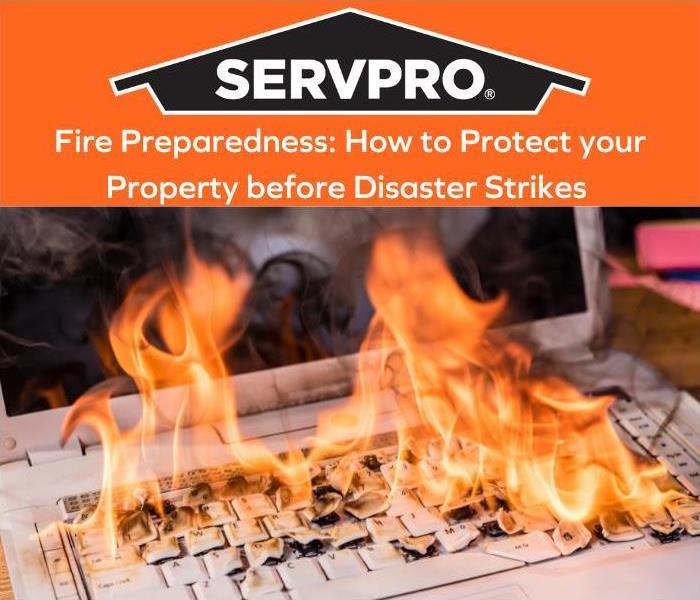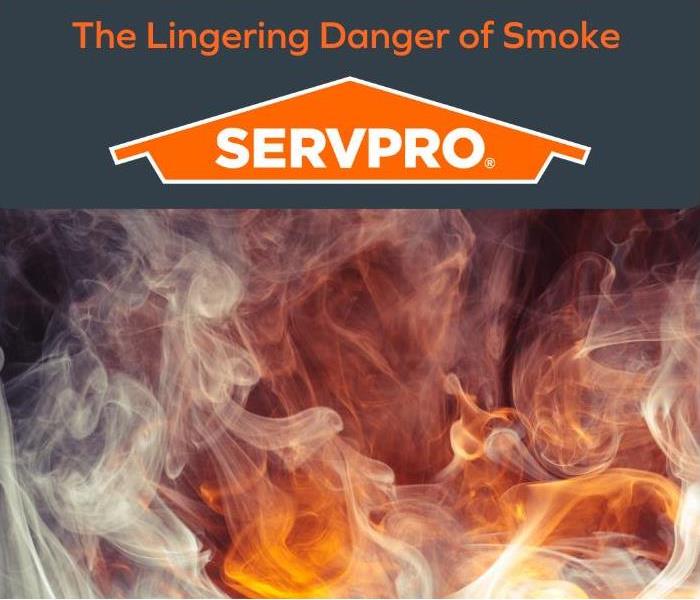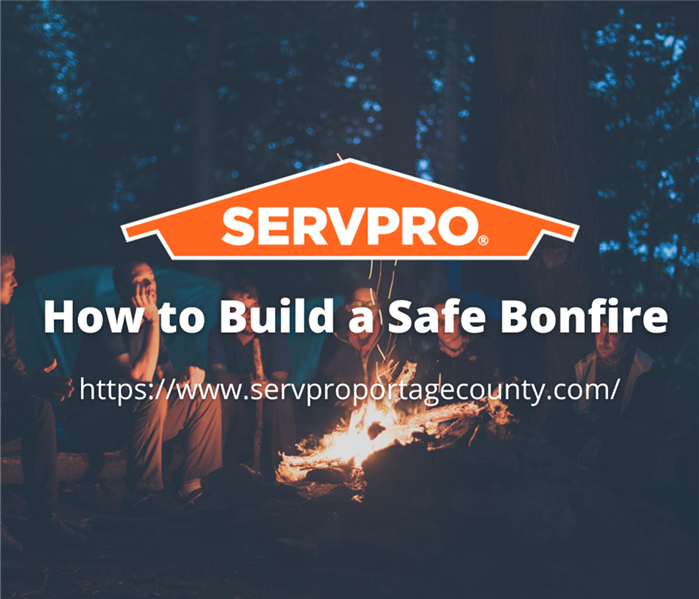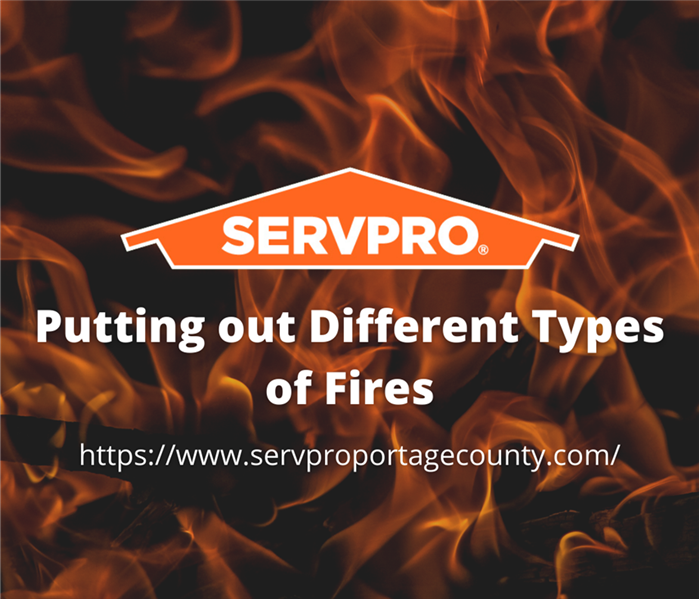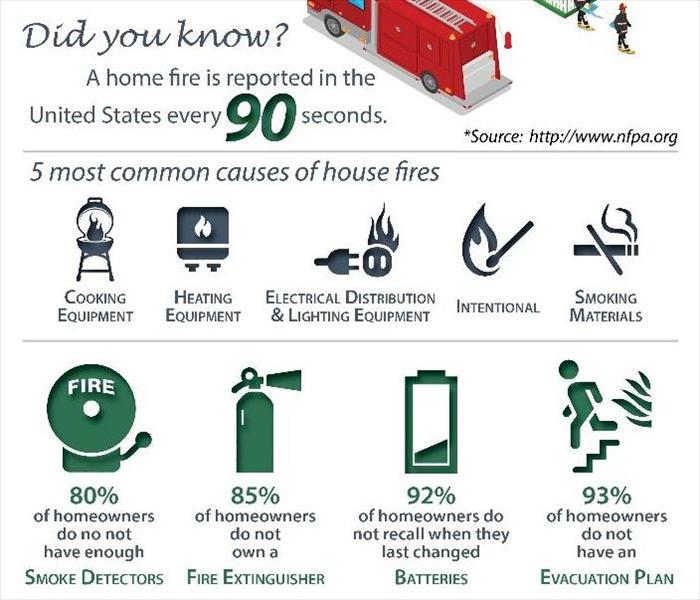Recent Fire Damage Posts
Fire Preparedness: How to Protect you Property before Disaster Strikes
8/29/2023 (Permalink)
The best way to stop a fire is to keep it from ever happening.
Nearly half of fires start in the kitchen, leaving food unattended on the stove. There are several easy tips to keep fires from starting in your kitchen. Never leave cooking food unattended, and never cook when tired. Check back on food that takes long to cook, making sure that water hasn’t boiled away, keep oven mitts, towels, and wooden utensils away from the stove, keep a fire extinguisher nearby but not too close to a cooking source that you would be unable to access it in the event of a fire.
Home fires can also be caused by faulty wiring or the use of space heaters when sleeping. Fire safety tips for bedrooms, and other rooms in your home include blowing out candles before bed or leaving the house, placing laptops, cell phones, or other charging devices on a solid surface. Electronic devices charging on a bed or carpet, where if overheated, can start a fire. Check the wiring through the house to make sure it is up to code, never leave electric blankets on overnight, turning them off when ready to sleep. Chimneys should be inspected and cleaned each year, only using dry wood, install a chimney cap to prevent animals from nesting, and of course, put out a fire before leaving or going to bed.
The Lingering Danger of Smoke
8/1/2023 (Permalink)
Let’s start off with what smoke damage is. Smoke damage is the damage caused by smoke that’s generated by fire but not caused by the fire itself. Smoke damage does destroy items but instead covers them in soot and odors. Smoke damage is complex and is difficult to remove, it can reach other rooms that were otherwise unaffected by the fire, traveling through ducts, pipes and other crevices. While smoke damage doesn’t destroy items like fire, it is still incredibly dangerous to your health.
Smoke inhalation is the number one cause of deaths related to fire. The chemical makeup of smoke is determinate of what items were burned, different toxins and heavy metals, along with tar and carbon. Lungs and sinuses can be irritated, making breathing hard, residual smoke and soot in clothing and furnishings can cause skin inflammations that can’t be treated with over-the-counter lotions and ointments. Even if you cannot see smoke damage it is still extremely important to have a fire restoration company come in and thoroughly clean the entire property.
Many think that fire is the most imminent danger to your health, but lingering smoke and soot can cause severe health effects. Smoke can get trapped in porous materials, from carpets, to furniture. Always call the trusted fire restoration professionals at SERVPRO to help restore your home to a safe environment for you and your family.
How to Build a Safe Bonfire
6/23/2022 (Permalink)
To build a safe bonfire, there are a few tips to remember. Building a bonfire is fun because you can tell ghost stories, make smores, roast hotdogs, and sing campfire songs. You just need to pile up dry wood in a safe place and light a match. Building a bonfire can be very fun, but it is important to remember that safety comes first.
Before you make your bonfire:
- Make sure that bonfires are legal in your area, and during which times of year
- Contact your local fire department to see if there are any requirements for building an outdoor fire
Proper Bonfire supplies:
- Tinder (newspaper, bark, needles, pine)
- Kindling: Kindle are larger sticks to be used for the fire
- Fuel: Logs will be used to keep the fire going for however long you please
How to build the fire:
- Make a circle with bricks or stones. If you are considering making a permanent bonfire pit in your yard, consider digging a hole and bordering it with stone or bricks.
- Stand the tinder up in a teepee shape in the center of the circle.
- Make a teepee using the tinder, and be sure to leave gaps so that oxygen can escape.
- Add some fuel logs. Make sure they are parallel to each other on either side of the teepee. Repeat this process up to 5 times depending on how large you want your bonfire to be.
- When the bonfire is set up, drop a match in the center of the teepee to get the fire started. Make sure the match is completely inside the teepee.
Putting out Different Types of Fires
6/1/2022 (Permalink)
Fires are complex, and each fire has different plans for action and for extinguishing. There are five different types of fires, Class A, Class B, Class C, Class D, and Class K. There are ways to approach each type of fire, and knowing tips and ways to extinguish these fires will be beneficial if you are ever caught in a fire safety situation.
Class A
Extinguishing with water, using a hose to have constantly flowing water into the fire is the best way to put these out. These types of fires are commonly ignited by wood, trash, papers, plastics, and more. Dumpster fires are prime examples of Class A fires.
Class B
Extniguies by depleting oxygen. If a Class B fire ignites, the best bet for extinguishing is by trying to smother the flames. If you use water on these types of fires the flame will spread and cause more damage. These types of fires are commonly ignited by the exploding of flammable liquids. Gasoline, alcohol, oil, and more can cause Class B fires.
Class C
Extinguishes by shutting off the power. These are known as electrical fires and the best way to extinguish these fires is by cutting the power off, which is described as the fuel source for the fire.
Class D
Extinguishes with dry powders. These types of fires are common in laboratories and are ignited by combustible metals. Never use water to extinguish, this will worsen the flames. Powdered copper, graphite, and sodium chloride are effective in extinguishing Class D fires.
Class K
Extinguishes with fire extinguishers. These are cooking fires, and these fires are sparked by greases, oils, and fats. The chemical fire extinguishers you have on hand are the best for putting these out because the chemical agents contained in these fire extinguishers absorb the heat of the flames.
Space Heaters: Do's and Dont's
12/30/2021 (Permalink)
It has cooled down and it’s officially time to turn on the heaters. Space heaters are high-wattage items that have the potential to create fire and set items like curtains and clothing on fire. According to the DoE, 6,000 people go to the emergency room with burns from coming into contact with space heaters. If you follow the proper safety precautions, your space heater will be safe to operate.
DO:
- Check the label of the heater. Your space heater should be listed by a qualified testing laboratory.
- Buy a heater with a smart sensor. Some space heaters have sensors, and they will turn off when they overheat or if it tips over.
- Check here to make sure your space heater has not been recalled.
- Make sure that your space heater has been updated and has been tested. In addition, make sure that your carbon monoxide detector is tested monthly.
- Examine your space heater and check the cord and plug. If you think that there is damage, do not run your space heater.
- Unplug your heater when it is not in use.
DON’T:
- Keep your heater near water. Your space heater should not be left in kitchens or bathrooms, where water is likely to splash around.
- Keep your space heater near flammable objects. Objects such as curtains, papers, furniture, pillows, and bedding are all objects to avoid when using your space heater.
- Leave your heater alone. Make sure that you are in the room while you are using your space heater, especially if there are young children nearby. In addition, do not leave your space heater on while you are sleeping.
If you have questions or concerns about your space heater, check it frequently and make sure that it is working correctly. Lastly, before you buy your heater, make sure that it is not recalled.
Five Things you Should Never Burn in your Outdoor Fire Pit
11/1/2021 (Permalink)
Though it may be fun or therapeutic to burn items in a fire, there are a few that should never be burned in a fire for your safety. Do not burn rubber, old paper, plastics, trash bags, or any sort of garbage in a fire. Many items that are processed can release toxic chemicals and pollute the air and create an unpleasant smell. This includes batteries and aerosol cans.
While it may be fun to burn a pizza box in the fire, this is all something that should never be burned in a fire. Cardboard and paper boxes can create an abundance of smoldering ash that can spread to nearby trees, bushes, and houses.
Poison Ivy or oak should never be burned in a fire. Poison Ivy isn't good for human skin, and it could be even worse for your lungs if ingested. To avoid burning poison ivy or oak, be sure to watch the type of vines that are wrapped around wood you are putting into a fire.
Lighter fluid or gasoline should also never be used to keep a fire going. It can be tempting or fun to see the temporarily big flame, it can be very harmful to those around you. AS a precaution, this should never be used in a fire.
Other items to avoid are soft woods, food scraps, or yard clipping. Yard clippings should especially be avoided because they could trigger allergies to those around you.
Lastly, if you are very unsure of what to be adding to a fire, stick to adding firewood as it is the safest option. Please contact your local fire department if you have more questions concerning a safe bonfire experience.
Differences Between Home and Work Fire Evacuation Plans
9/6/2021 (Permalink)
Fire evacuation plans are a way to make sure that you are safe in case of an emergency, whether you are at home or the office. Creating these plans differ based on the people and location; therefore, work and home require two different fire evacuation plans.
Establishing Roles
At home, your responsibilities will be divided amongst your family, which will be greatly influenced by the age of the members of your household.
In the office, your roles will have to be divided by the employees and what they feel comfortable doing. No matter where you are, make sure everyone is confident in their skills to complete their tasks.
Plan Escape Route
Both at home and at work, explore all ways to exit fast during a fire. At home, you should find routes out of each room. Similarly, you should create plans to get out of each workspace in the office.
Communication
Communication will look different from your home and office. Home communication will most likely be very simple, as every member of your household will need to completely understand the plan. It will also involve fewer people.
Workplace communication may be much more formal and involve a large team. Make sure everyone knows their role in communicating important information.
Practice
Whether you are at work or at home, practicing is the most important part of your fire evacuation plan.
Creating an emergency plan has many similarities from your home and office, but there are a few key details that change from one plan to the next.
Make sure your plan is comprehensive, so you are prepared for an emergency. If you ever find yourself in a fire, call 911.
If there is any damage afterwards, call a trusted professional, such as SERVPRO of Portage County, to make sure your space is properly restored afterwards.
What NOT to do After a Fire
6/4/2021 (Permalink)
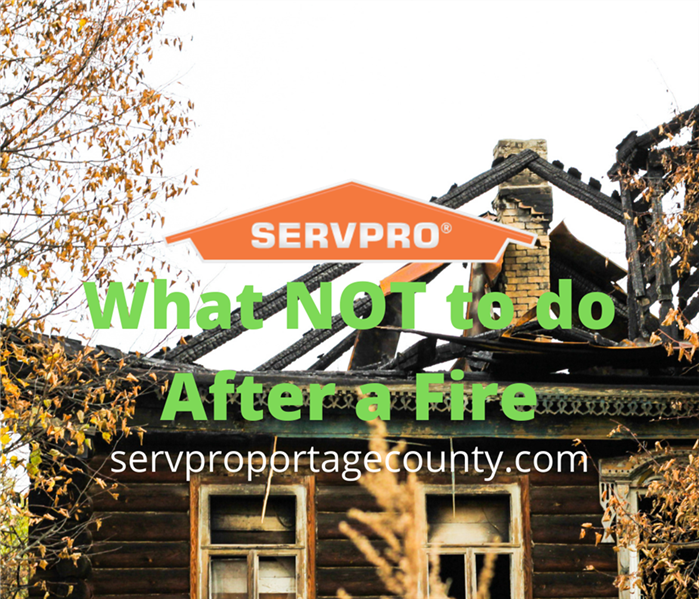 Prevent and protect your home from fire damage with help from SERVPRO.
Prevent and protect your home from fire damage with help from SERVPRO.
Fires are dangerous, even in the aftermath. It’s pertinent that you know what to do, and more importantly, what NOT to do after a fire breaks out in your home or business. There are a few very critical actions you should avoid when dealing with a fire outbreak, remember these four fire don’ts:
DO NOT enter the building until you are given professional advisory that it is safe to do so.
DO NOT turn on any gas, water, or electric utilities until a professional has assessed the severity of the situation.
DO NOT start or move any vehicle that has been impacted or affected by the fire.
DO NOT attempt to clean any soot, smoke, or burn damage yourself. Wait for the professionals with the proper experience to arrive at the scene. It’s important to not risk anything or leave any factors up to chance without the proper education.
One of the most important things you CAN DO after fire damage is to call your local SERVPRO. We are your trusted fire damage restoration company and will take care of any mitigation, restoration, and clean-up services you could possibly need after a fire strikes. We guarantee it will be no sweat off your back.
Backyard Bonfires & Fire Safety
4/5/2021 (Permalink)
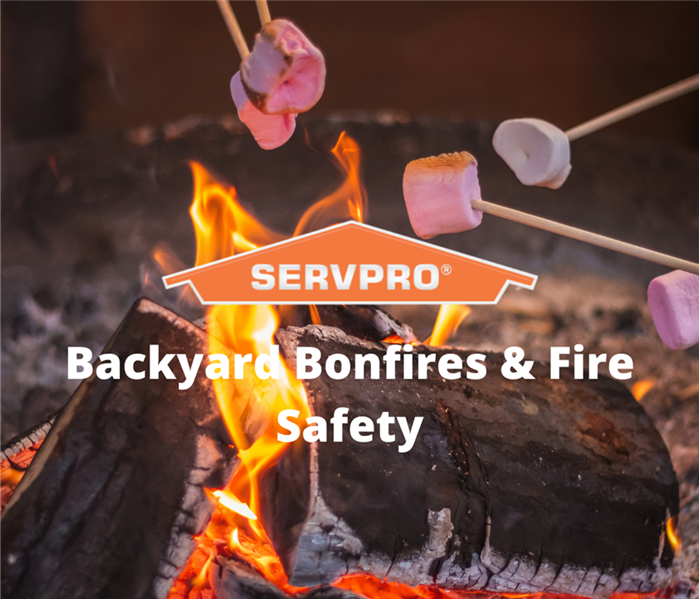 Ensure your backyard bonfire is as safe and fun as possible.
Ensure your backyard bonfire is as safe and fun as possible.
You have the perfect s’more in your hand, toasted golden brown marshmallow on 2 perfect squares of graham cracker, and chocolate on top and bottom. You can hear your uncle’s voice, telling his favorite ghost story for the umpteenth time. Raw throat from the top of your lungs rendition of Kumbaya. Life doesn’t get much better than sitting around a bonfire with your friends and family on a cool fall evening. However, if you do not follow safety precautions the best night ever could become the worst with no warning.
Before the Fire
- Only build fire in enclosed, contained areas.
- Clear the area around the pit of dry paper, grass, leaves, or pine needles
- Make sure the pit is on a flat surface in an open area, away from any trees and the home
- Move furniture away from the fire pit
- Keep flammable materials away from the fire pit
- Check wind direction and be prepared to make any adjustments
During the Fire
- NEVER leave a fire unattended
- NEVER use garden waste or trash in a fire
- NEVER leave children unattended
- Keep your distance, sparks can fly unexpectedly
- ALWAYS keep a fire extinguisher or hose nearby
When the night is coming to a close, you must put the fire out completely before leaving the area. To do this you will want to douse the fire with water. Once the flames are extinguished use more water and stir with a stick or shovel to confirm all ashes, wood, and sparks have been successfully put out. Be sure to store any flammable items safely and away from children.
A backyard bonfire is one of the best ways to enjoy a warm or even cool night with friends and family. If you follow these safety tips, your only worry will be running out of marshmallows. Remember fire is dangerous, but handled with care and safety enjoying a night by the fire should remain a timeless tradition.
Does Stop, Drop, and Roll Really Work?
4/5/2021 (Permalink)
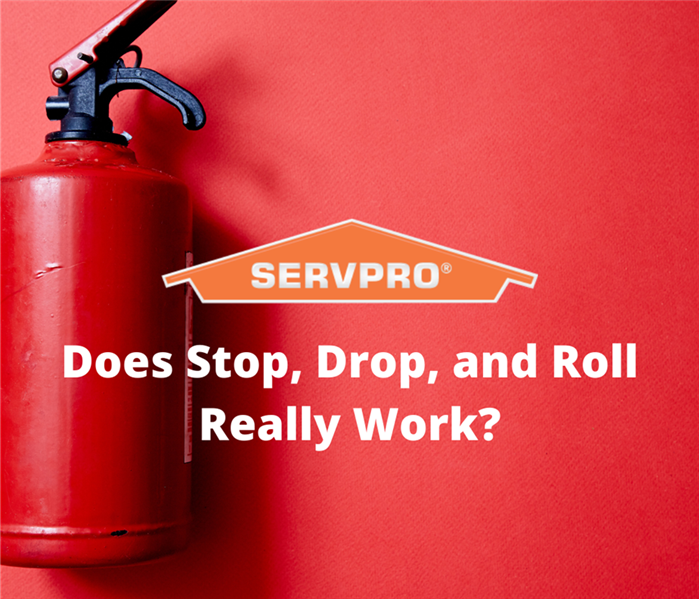 Practice the safest way to extinguish a fire on your body. Stop, Drop, and Roll.
Practice the safest way to extinguish a fire on your body. Stop, Drop, and Roll.
There are a few days in elementary school that stick with you for the rest of your life. Field Trips, special assemblies, fun science experiments, and the day the firefighter comes in to teach stop, drop, and roll. At the time it felt like a game, everyone was laughing and having a good time being allowed and even encouraged to roll around on the floor, not really understanding what the importance of the exercise could actually be in a life-threatening situation. It may have felt silly back then and even more so as an adult, but the imperative question is – Does it work?
Stop, drop, and roll does work. It is the best technique to put out a fire on the human body, or more precisely, to put out a fire that is on clothing that is being worn on the human body. The technique is extremely simple and easily remembered which is important because it is necessary during a time where every piece of knowledge you have acquired will be nowhere to be found. Having your clothes on fire is a situation likely to involve quite a bit of panic and it would not be a good time to try and recall an 18 step process you learned decades ago.
As the name suggests this technique involves three fairly simple steps:
- Stop - the person who is on fire should stop immediately when they recognize that they are on fire. While it might seem a little trivial, continued motion can act to fan the flames and add more oxygen to the fire. This can make it burn faster and stronger and you don’t want that.
- Drop - this means the person who is on fire needs to drop to the ground, ideally into a full lying position, and at the same time they should cover their face with their hands (this will stop them from getting hurt as they carry out the last part of the process and may stop their face from getting burned too).
- Roll - then the goal is to roll over and over again (back and forth) until the fire is completely extinguished.
It may be hard to fathom that such a basic tool really can save your life, but science proves backs it up. In order for fire to burn – it needs oxygen. When you roll around on the floor over and over, you are removing the oxygen source from the flames and thus extinguishing them.
Hopefully, if you ever need to use this technique your clothes are the only thing on fire. If the unfortunate occurs and there are damages to your home and property from fire, calling SERVPRO — 1(800)SERVPRO — is the simple technique to do next, once everyone is safe from danger. With over 50 years of experience in fire damage restoration, they will take care of the rest.
Storing Flammable Products & Accessories in the Home
12/2/2020 (Permalink)
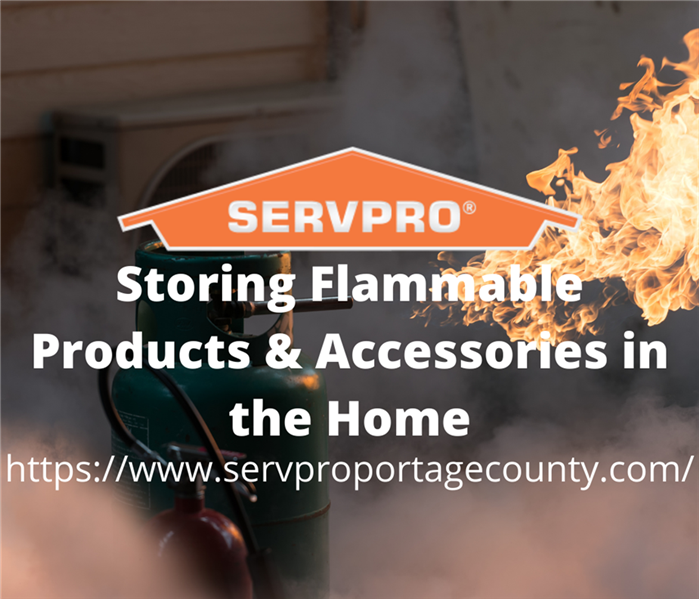 Keep your home safe from fire and properly store your flammable products.
Keep your home safe from fire and properly store your flammable products.
Everyone has flammable products within their homes, but do you think of how to store them after use? It is just as important to be safe with storing these products as it is to monitor them when they are in use. They can have dangerous and devastating consequences if improperly stored like fires, poisoning, or even explosions. Here are some tips on how to store your flammable products to avoid these problems that can happen.
Room Temperature
The temperature of the room you store flammable products is very important because it can be a fatal mistake if the room is too hot. If the room is constantly exposed to high heat whether it's from direct sunlight, high temperatures due to the climate, or even a room that is being purposely heated to higher temperatures it can cause all the devastating factors like fire, explosions, etc. that can be fatal. If you don’t think any areas in your home or workspace would meet the requirement for a safe room temperature for these items then there are alternatives you can use. It is possible to build a safe flammable storage cabinet to keep these products in.
The Proper Container
Not storing your items in a flammable cabinet or container can lead to problems. So it is very important to keep your products in the right container. When storing these products it is almost guaranteed to be safe if you store them in an approved container. If it is approved and tested vs a homemade container like a paint can, etc. it is guaranteed to be a lot more protected and has a substantially lower chance of causing any devastation. Storage containers for these products are very important and should be taken seriously.
Location of Storage
When you’re thinking about a location for keeping your flammable items it is vital to keep them away from certain locations. Many people tend to store these items in their garage, basement, etc. but that can be a fatal mistake. Don’t store flammable products by things that can spark. They need to be kept away from flames and sources of ignition like a car. Also, be careful of your flammable products and accessories around your HVAC systems because it can cause a spark with the item and may start a fire or other catastrophic disaster.
Be cautious with your flammable items to avoid a major problem that can occur later down the road. We have the experience and knowledge to be able to help you store your items in the safest way possible. Give us a call at 1-800-SERVPRO or visit our website for more information. We’ll take the worry for you.
Avoiding Fires at Your Holiday Dinner
11/1/2020 (Permalink)
 Don't let disaster ruin your holidays. Stay safe with good fire safety tips.
Don't let disaster ruin your holidays. Stay safe with good fire safety tips.
Everyone loves the holidays. Spending time with family and friends is always enjoyable and there is always great food. But what would you do if the unexpected happened at your family holiday gathering? It can be hard to plan for things that you don’t think will happen but you can take certain steps to help lower your risk of trouble at your holiday event.
At holiday gatherings there is always a lot going on and it is hard to stay on top of your responsibilities. You could easily forget about the food in the oven or not hear the timer go off because you are talking to someone. A way to prevent this from happening is to set multiple timers to go off when the food is done so you get lots of reminders that you need to go get the food. This prevents you from forgetting about what you’re cooking and lowers the chances that something might burn or catch fire.
Another way to prevent a fire from happening is to have all of your smoke alarms set up and working. This alerts you when the food has been cooking for too long and if not taken out it could start a fire. It will prevent a fire from being started and keep the event going instead of it ending in a disaster. Being responsible with fire safety is very important when cooking.
Additionally, you can prevent a fire from starting at a family gathering by having multiple people watching the food that is being cooked. Having more than one set of eyes on the food is always helpful. This reduces the chance of forgetting about the food that is being cooked. The more people watching and taking care of the food will ultimately prevent a fire from starting and ruining the family event that is taking place.
There are many different ways you and your family can keep everyone safe from a fire during family gatherings. All it takes is responsibility and the event should be an enjoyable time for everyone. You never want to be a part of a disaster especially with the people you love and care about. In the event of a disaster, be sure to call SERVPRO of Portage County. We can make it look like there was never a fire with their fire restorations. Make sure you are being responsible and if you are in need of assistance call us. SERVPRO is always faster to any disaster.
Avoid Disaster with Good Grill Safety
9/22/2020 (Permalink)
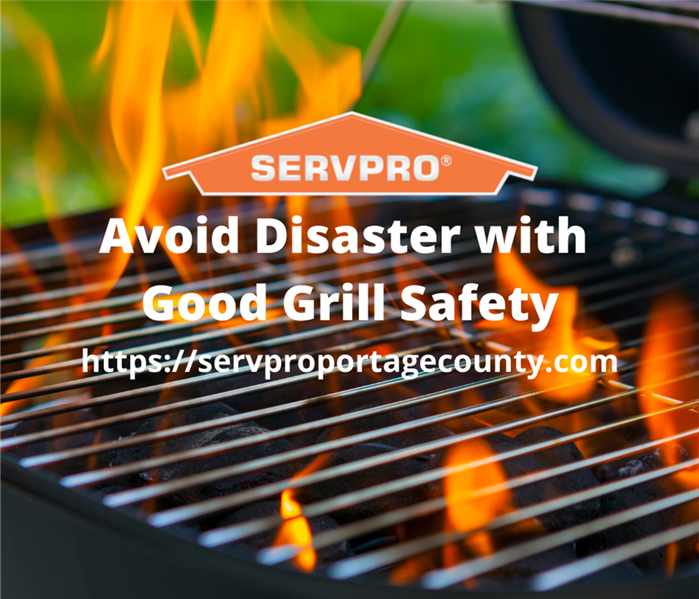 Don't let an out of control grill fire ruin your cookout or your dinner!
Don't let an out of control grill fire ruin your cookout or your dinner!
What is there NOT to love about getting outside on a beautiful day and firing up the grill! For thousands of years, our ancestors have answered the same call to cook our food on an open fire. Fire has been our greatest companion, but can also be our deadly enemy. Unpredictable and rapid, fire often seems to have a mind of its own. So, let’s be prepared!
The season is right, warm days lingering into cool nights, but there are some things to be aware of before stacking the charcoal or opening the propane valve. Our homes are where we store our memories, where we shelter our families, where we invest our earnings. It is underestimated how frequently small grilling mishaps become major disasters. We have these many things and more to protect. Let us be wise on how to keep them safe while enjoying the sacred rite of cooking out!
It will come as no surprise to read that children account for the majority of accidents involving outdoor cooking and grill fires. Thousands of people are treated for severe burns each year and property losses are extreme. Thankfully, only a few steps are necessary to keep this from happening to us.
Always keep the grill as far from the home as possible, at least 15 feet. Stay attentive of the grill or fire until you are sure it is completely extinguished. Keep a bucket of sand nearby and never use water on a fire involving grease or fat. The correct fire extinguisher is critical and should be close at hand. Keep grills from brush or tall grass, and always make sure to test your propane lines for leaks. Small handheld chimneys are great for getting charcoal grills started safely and quickly.
SERVPRO of Portage County wishes all the residents of our community a great time with family and friends outside by the grill. We hope that you will take these vital precautions and prepare yourself against accidents.
Things You Should Know About Summer House Fires
6/16/2020 (Permalink)
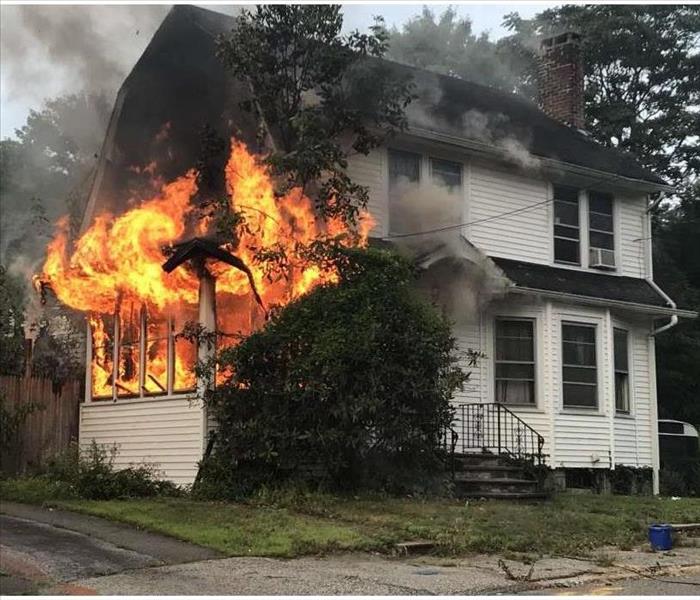 Avoid disasters like this one by taking simple summer precautions.
Avoid disasters like this one by taking simple summer precautions.
House fires are less common during the summer months than during the winter but that doesn’t mean they don’t happen. House fires can happen at any time and the summer presents a range of unique risk factors that cause fires. There are some things you should know about summer house fires to stay aware of your surroundings and help prevent disaster in your home.
One of the biggest causes of fires in the summer is cooking, both outdoor and indoor. Indoor cooking is a leading cause of fire all year round and the summer is no special case. However, in the summer, many people take the cooking outdoors to their grill. Grill fires are often caused by mishandling of propane, improperly maintained grills, and inattentiveness. You should check your propane tank and line for leaks and to ensure that it is properly attached every time you use your grill. Additionally, your grill should never be left unattended. Take the time to clean your grill every time you use it, as buildup could be a major cause of grill fires.
Another common cause of fires in the summer months is air conditioners. Most air conditioner fires are caused by faulty electrical components and short circuits. You should have annual inspections of your air conditioning system to help avoid any electrical failures but also to help reducing cooling costs by cleaning out dirty or clogged systems. If you have central air, you are less likely to be at risk for electrical fire from the air conditioning system. Individual units can get overloaded and cause issues much quicker than central systems.
Smoking is a leading cause of house fires year-round as well. People who smoke in their homes are always at higher risk than those who step outside but dry conditions during the summer months can cause fires from improperly extinguished cigarettes if you are not careful.
Other causes of summer house fires include a spike in arson cases and natural disasters like lightning storms. There is not much you can do to prevent either of these cases but they are far more rare than the other preventable issues that lead to house fires in the summer months.
If the worst-case scenario happens to you, make sure that you call SERVPRO of Portage County. We are faster to any disaster 24/7/365. We have highly trained technicians to repair and clean damage to your home. Contact us at (330) 650-4486.
SERVPRO ASSISTS PORTAGE COUNTY BUSINESS IN FIRE RESTORATION
4/14/2020 (Permalink)
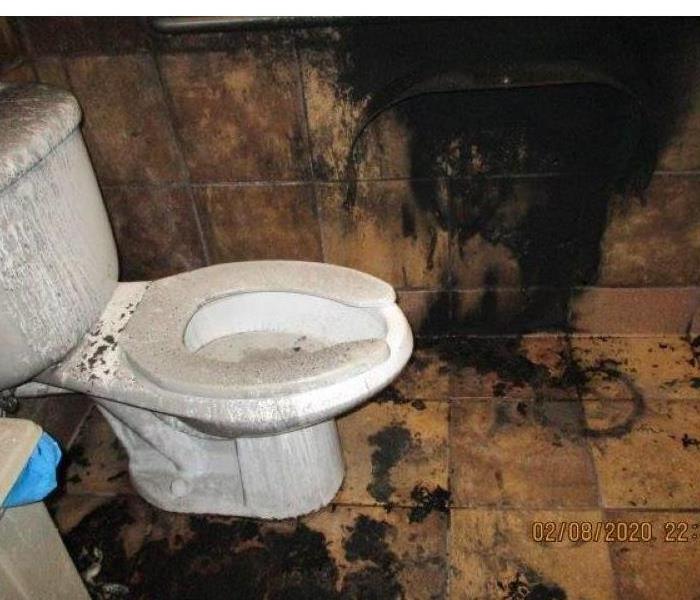 SERVPRO assisted a Portage County business to quickly reopen following a bathroom fire.
SERVPRO assisted a Portage County business to quickly reopen following a bathroom fire.
Experiencing fire damage in your commercial building can be devastating. SERVPRO of Portage County will quickly respond to all emergency request. SERVPRO’S team will immediately assess the extent of damage, areas of contamination, and rapidly develop a structured mitigation plan to implement for your facility. SERVPRO of Portage County has over 35 years of fire damage cleanup, restoration training, and indoor environmental health experience. SERVPRO of Portage County is focused on protecting your employees, your customers, and minimizing disruptions to your operations so that we can help keep your business running smoothly.
Heavy extensive deposit of soot and ash will require professional cleaning to remove soot particulates, contaminates and staining. In the Portage County fire loss, SERVPRO responded to restore after a bathroom fire. SERVPRO’s professional team of restorers used air scrubbers and containment to protect cross contamination to the non-affected area of the building. The methods and equipment used will depend upon the type of combustible substances. Smoke and soot from wood, protein or synthetic material will each create a different kind of cleanup problem. SERVPRO was able to clean and restore this commercial property with the use of professional cleaning agents, IICRC certified cleaning technicians, and quick response. Our Portage County customer was able to reopen their business within 24 hours of this event.
While fires are scary, professional fire damage restoration services can help minimize downtime and quickly return you to business as usual.
Have Questions about Fire, Smoke, or Soot Damage?
Call Us Today – (330) 677-4483
SERVPRO OF PORTAGE COUNTIES RESTORES FINE ART FOLLOWING FIRE DAMAGE
4/13/2020 (Permalink)
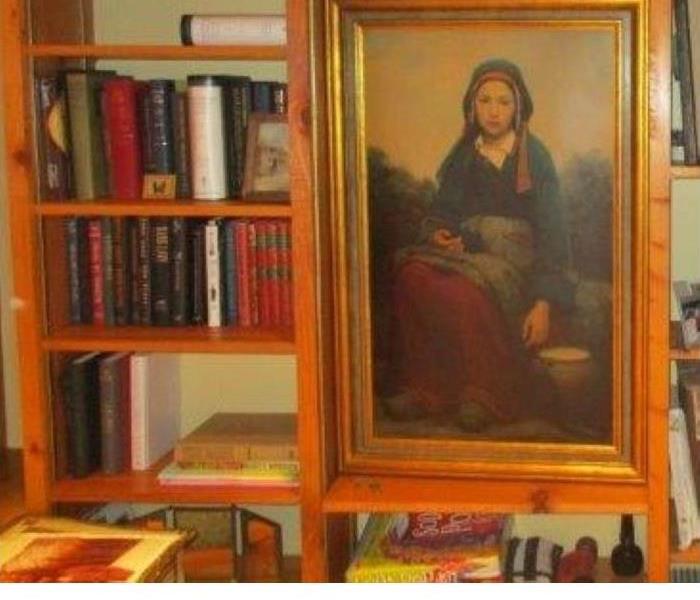 SERVPRO of Portage County assists an art owner to restore several pieces of artwork after soot damage.
SERVPRO of Portage County assists an art owner to restore several pieces of artwork after soot damage.
SERVPRO of Portage County works with insurance companies and claim representatives to evaluate and restore works of art that have been affected by water, mold, soot, or fire damage. Time is of the essence for the best possible restoration outcome. Call us to ensure that damaged artwork is property handled after experiencing damage. Improper handling can further damage the piece and increase the cost of restoration.
SERVPRO of Portage County can provide expert evaluation of damaged artwork. Based on the evaluation of each piece, SERVPRO will provide develop and implement a plan for restoration. SERVPRO can provide all necessary restoration services to return the artwork to its preloss condition.
SERVPRO can assist in restoring books, photographs, ceramics, paintings and works on paper. Our experienced and professional restorers can restore your damaged items and maintain the integrity of your piece at the best possible cost.
Call SERVPRO of Portage County if you have any fine art or family memories that you need restored. We are passionate about restoring your collectibles.
Christmas House Fire Safety Tips
12/1/2019 (Permalink)
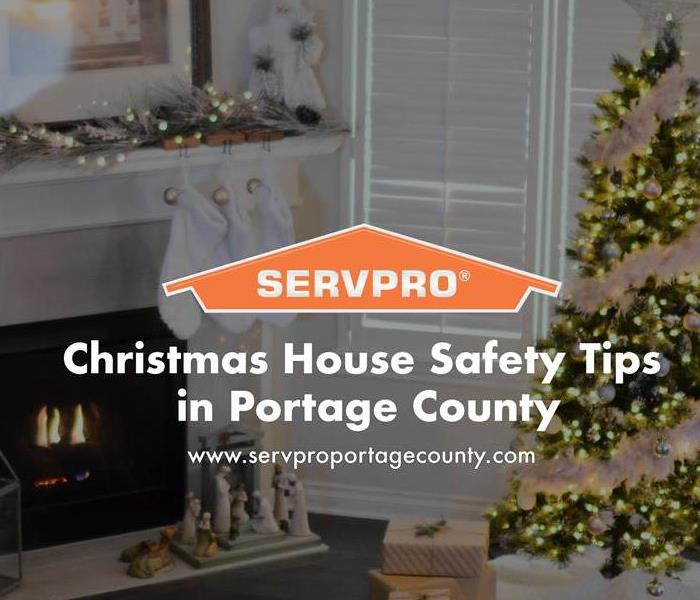 There are so many other ways to prevent fire, around Christmas time, but these are a few of the common mistakes.
There are so many other ways to prevent fire, around Christmas time, but these are a few of the common mistakes.
Christmas is around the corner, and you know what that means: fire safety. Each year, fire departments respond to an average of 210 structure fires caused by Christmas trees. Carefully decorating Christmas trees will make the holidays safer.
Here are some great Fire Prevention tips:
- Choose a tree with fresh, green needles that do not fall off when touched.
- Make sure the tree is at least three feet away from any heat source, such as fireplaces, radiators, candles, heat vents or lights.
- Make sure the tree is not blocking an exit.
- Add water to the tree stand daily.
- Some lights are only for indoor or outdoor use, but not both make sure you choose the right ones.
- Replace any string of lights with worn or broken cords or loose bulb connections.
- Always turn off Christmas tree lights before leaving home or going to bed.
- Get rid of the tree when it begins dropping needles. Dried-out trees are a fire danger and should not be left in the home or garage, or placed outside against the home.
There are so many other ways to prevent fire, around Christmas time, but these are a few of the common mistakes. We hope that you do not ever experience a fire.
We know how devastating fire damage can be, but we are here to help! Call SERVPRO of Portage County (330) 677-4483 to help get your home restored efficiently.
Thanksgiving Fire Tips
11/4/2019 (Permalink)
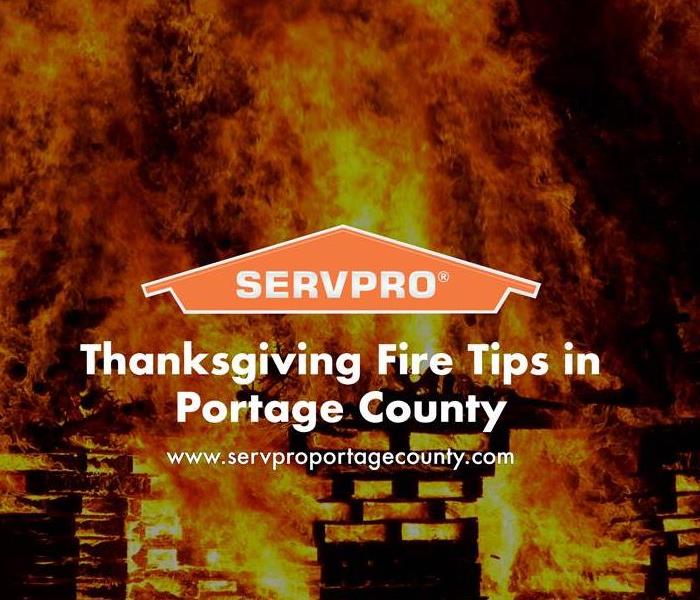 Fire safety top of mind in the kitchen during this joyous time is important, especially when there’s a lot of activity at home.
Fire safety top of mind in the kitchen during this joyous time is important, especially when there’s a lot of activity at home.
For most, the kitchen is the heart of the home, especially during the holidays. Everyone enjoys being part of the preparations.
Fire safety top of mind in the kitchen during this joyous time is important, especially when there’s a lot of activity at home. As you start preparing your holiday schedule and organizing that large family feast, follow a few simple safety tips so you can enjoy time with your loved ones.
Here are some safety tips
- Stay in the kitchen when you are cooking on the stove top and keep an eye on the food.
- Stay in the home when cooking your turkey, and check on it frequently.
- Keep children away from the stove; children should stay three feet away.
- Make sure kids stay away from hot food and liquids. The steam from vegetables, gravy or coffee could cause burns.
- Be sure electric cords are not dangling off the counter within easy reach of a child.
- Keep matches and utility lighters out of the reach of children.
- Keep the floor clear so you don’t trip over anything.
- Make sure your smoke alarms are working. Test them by pushing the test button.
Thanksgiving fire facts
- Thanksgiving is the peak day for home cooking fires, followed by Christmas Day, Christmas Eve, and the day before Thanksgiving.
- In 2016, U.S. fire departments responded to an estimated 1,570 home cooking fires on Thanksgiving.
- Unattended cooking was the leading contributing factor in cooking fires.
- Cooking equipment was involved in almost half of all reported home fires, and it is the second leading cause of home fire deaths.
We know how devastating fire damage can be, but we are here to help! Call SERVPRO of Portage County (330) 677-4483 to help get your home restored efficiently.
Would You Be Prepared For A Fire in Portage County.
9/24/2019 (Permalink)
 There is no real way to be prepared, but a fire can strike. Being prepared will help reduce its devastating effects.
There is no real way to be prepared, but a fire can strike. Being prepared will help reduce its devastating effects.
There is no real way to be prepared, but a fire can strike. Being prepared will help reduce its devastating effects. The first few minutes following a fire are the most important; any inappropriate action or inaction at this stage can have far-reaching consequences.
When a fire occurs, notify the fire department, the police department, and the insurance company immediately. Next, call a disaster restoration company, such as SERVPRO of Portage County, to help prevent further damage. Because fire departments usually do not recommend specific disaster restoration professionals, a business should reference its contingency plan or contact its insurance company.
By evaluating the materials and surfaces affected, a disaster restoration company, such as SERVPRO of Portage County, can provide an understanding of the fire's chemistry and allow for a targeted, informed restoration effort. Even though each fire's chemistry differs, one of the most important things disaster restoration companies do immediately is wipe down the affected areas to avoid further damage. We use air scrubbers, which are highly filtered air machines, so soot particles will not recontaminate air and will limit redistribution of contaminated particles while restoration work continues. We pull all filters from the HVAC system, clean and recondition the system, and then install new filters.
A fire can involve well more than 100 chemical elements. A fire at a business is usually a complex fire, the result of incomplete combustion and fueled by synthetic materials, including those found in carpets, furniture, plumbing, and other equipment. Complex fires cause the most damage and leave the most waste, but disaster restoration professionals can professionally handle the cleanup and restoration.
We know how devastating a fire can be, but we are here to help! Call SERVPRO of Portage County (330) 677-4483 to help get your home restored efficiently.
Top Three Tips for Fire Safety in Portage County
6/18/2019 (Permalink)
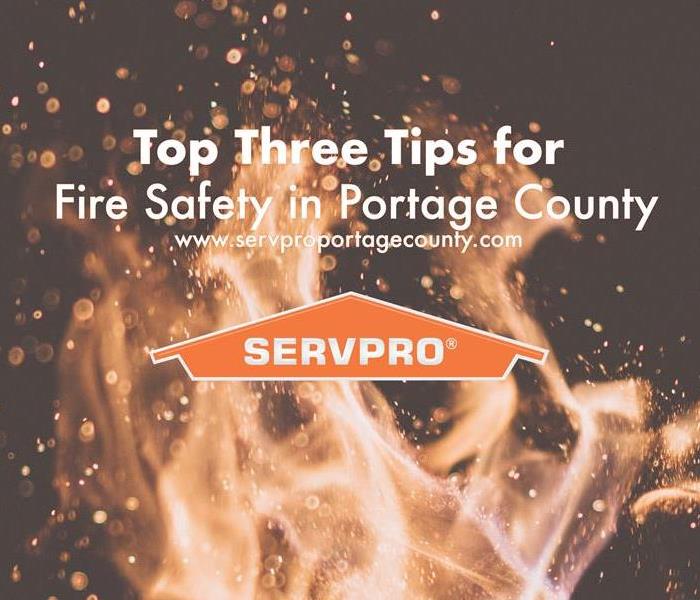 Our team of professionals will get your home or business back to normal in a timely manner.
Our team of professionals will get your home or business back to normal in a timely manner.
Fires escalate quickly, it is important to know before hand how to handle any fire that might happen in your home or business. Having an escape route practiced (committing it to muscle memory) and working smoke alarms can be literal life savers. What else can you do for fire safety in your home?
Here are our top three tips for fire safety that can keep you and your loved ones as protected as possible.
- Every level of your home should have a smoke alarm installed. Place them inside bedrooms and outside sleeping areas, including the basement, in living rooms and/or near stairways for optimal use.
- Test and maintain smoke alarms regularly. Each month, you should check that they are in proper working condition. If they need new batteries, change them right away. Smoke detectors are critical components to alerting you in time to get out before a fire spreads too much.
- Twice a year, you should practice your fire escape plan with your family. Feel free to talk and plan the route together more than twice a year. However, at least two times every year will ensure it stays fresh in your mind if ever you should need to implement the steps.
BONUS TIP: Remember to never go back inside for anything at all. If you experience a fire in your home, GET OUT, STAY OUT, and CALL FOR HELP.
For any fire damage repair or restoration needs, call SERVPRO of Portage County (330) 677-4483. Our team of professionals will get your home or business back to normal in a timely manner.
Helping Property Owners Recover from a Fire-Damage Emergency
4/11/2019 (Permalink)
Dealing with a fire-damage emergency and the claims process is an emotionally trying time for a policyholder. A restoration professional must be sensitive to the personal and emotional aspects of a fire-damage situation. It’s imperative to recognize that a homeowner goes through five stages of grief: denial, anger, bargaining, depression and acceptance.
The professional must be prepared to respond appropriately to each situation. Insurance professionals need to prepare the homeowner for the restoration process, work closely with the restoration professional to ensure quality and timely work, and maintain a constant flow of communication throughout the process. A restoration professional must recognize that every loss is significant to the people impacted by it, and take the proper steps to restore the home to preloss condition.
Dealing With a Fire-Damage Emergency
A fire loss is often more severe than a water loss, and special attention to safety is imperative. The restoration professional needs to ask the property owner some simple questions to quickly evaluate the level of damage: “Is there any structural damage? Is there a lot of smoke?”
Air quality is the most important factor to evaluate. With any fire, carcinogens enter the air, and safeguards will need to be put in place to help ensure the safety of the air that the residents and workers breathe. All necessary PPE should be available for technicians, as well as the proper equipment to replace the bad air with fresh air as soon as possible.
If not already aware, the service professional should consider the ages and health of everyone in the home. Young children, the elderly and pregnant women might need to leave the property immediately, as they are often more susceptible to air-quality related health issues. If the client is not comfortable living in the home, the agent needs to assist in finding alternative accommodations for the residents.
Specifics to Consider When Scoping a Smoke and Soot Loss
There are several important steps to take when analyzing a fire-damage emergency:
- Evaluate how much heat was involved that resulted in damage to the structure, fixtures and contents. Look for a “heat line” on the wall, which often indicates possible damage to the structural integrity of the drywall materials.
- Where did the smoke/soot travel to? Did the smoke get into the HVAC system? Did the smoke travel into the attic areas, or force its way into the crawl space or basement?
- Consider pre-cleaning as an alternative process to save the metal and glass items in a home.
- Is there excessive smoke inside of the walls? This often requires removal of the drywall to get rid of the smoke/soot and accompanying odors.
- Determine which systems are available that will best deodorize the property and contents. These include professional cleaning and sanitizing; organic deodorizing systems; hydroxyls; and/or ozone.
- Determine the extent of the damage and the processes/procedures that will return the property, and the lives of those people involved, back to a “preloss” condition as quickly as possible.
- Respond as rapidly as possible to minimize the long-term effects of smoke and soot damage, and the many acids those materials contain.
Smoke and soot-related emergencies require specific mitigation strategies, depending on the materials affected: flat or glossy paint, finished and unfinished; laminates and solid wood items; particle-board materials; natural and man-made fibers in carpets and upholstered furniture. Porous, semi-porous and non-porous materials all require unique cleaning and deodorizing systems to most effectively deal with smoke/soot damage.
Wildfires often destroy thousands of acres of property and hundreds of homes. There is not much a mitigation company can do in those situations. However, there are often thousands of homes that are downwind from the fire that suffer smoke and soot damage, both on the exterior and the interior of homes. Smoke enters around doors and windows, through the ventilation system and even through the soffit vents into the attic areas.
Knowing how to deal with these materials quickly and professionally to neutralize and remove the compounds from the home, and to control and manage the odor damage are key aspects of a professional restoration/mitigation company.
Overall, the most important thing to understand about a fire damage emergency is that helping a client cope with the property loss is first priority. Communication along the way and hand-holding through the process is just as important, if not more, than the property owner receiving a check for the loss.
The restoration professional should be empathetic and emphasize that the damage will be taken care of, but never pass off the restoration process as a casual routine. The level of damage should be evaluated quickly and efficiently. It is critical to work with the insurance agent to educate the policyholder, ease their concerns, and manage their expectations.
Understand that each client will go through five steps of grief, and anticipate that anger will turn up one way or another. If the restoration professional expects this emotion to surface, they will be prepared to help the client cope and restore their sense of calm.
Ask Annissa: How Do I Handle Sensitive Documents Damaged in a Fire Loss?
4/2/2019 (Permalink)
Personal papers like bills, canceled checks, credit card statements and everyday magazines have no value in the eyes of the insurance company and they often don’t want to pay for them to be cleaned or deodorized. However, they often have value to the homeowner.
The biggest problem with this is that paper can hold a lot of odor and may re-contaminate the house once everything is unpacked. So first off, we check with the homeowner and see if the paperwork is something that they can live without. Or is it really important and needs to be kept? Once you explain that the papers can hold a lot of odor and may cause recontamination of the house and belongings, this will sometimes make the homeowner more aggressive about putting them in the round file.
If the paperwork cannot be parted with and must go on the “keep it list,” then we dust them off and organize them into a large 11x14 inch spec bag. This is a heavy duty plastic bag that keeps the odor and contamination contained until the homeowner can photo copy or reprint the documents they want to keep. The cost to the insurance company to handle them this way is really no more than their cost would be to throw them away, so this keeps your adjuster and homeowner happy.
This also allows the homeowner to go through the papers at their convenience as they are dealing with a lot of pressing decisions in the first few days after a fire. Having one less pressing thing to have to handle right away can be a huge relief for them.
NEVER...walk away from your stove
1/3/2019 (Permalink)
Sporting Events and Television!
It happens, especially during sporting events…… you can hear the roar of excitement from the other room, and you know you are missing the big play of the game. So you leave the stove, just for a quick peek. Only it’s just never as quick as you anticipate. Meanwhile back in the kitchen….grease fire has erupted. It can happen so quickly, the cooking oil gets over heated and out of control.
Good Rule: never leave the stove or turn your back for any period of time.
Think fast!
1) Evaluate – call 911 if it is out of control while gathering family and get to safety
2) Put a metal lid on it
3) Turn off the heat
4) Dump baking soda
5) Chemical fire extinguisher is best as a last resort or if the above options are not available
6) Stop. Let the area sit, cool down, before you address the damage.
NO, NO, NO
1) Do not throw water
2) Do not use a hand towel
We hope you never need to remember these tips. But your SERVPRO Team is here to help with the clean up should disaster strike. The photos are from a kitchen grease fire; just a second of “unattended”. The good news is the final repairs are beautiful; "Like it never even happened." No family members, or pets were injured in the event. Just frayed nerves and a bit of quilt. (Accidents happen and we should learn from them and move forward.)
Quick thinking allowed the structure damage to be contained to the kitchen. However soot and smoke damage occurred throughout the residence.
We are here to help 800-648-1212
10 tips to prevent chimney fires
11/3/2018 (Permalink)
Proper home maintenance requires constant vigilance.
Chimneys, in particular, require upkeep. A chimney that is dirty, blocked or in disrepair can inhibit proper venting of smoke up the flue, and can also cause a chimney fire. Nearly all residential fires originating in the chimney are preventable, according to the New York State Homeland Security and Emergency Services.
Chimney fires account for 75% of home heating fires, meaning homeowners should actively monitor their chimneys. Homeowners looking to avoid damage to their property and increased premiums should prepare for fires by checking their smoke alarms and updating their emergency plan.
The Chimney Safety Institute of America recommends looking for these signs of a pending chimney fire: a loud cracking and popping noise; a lot of dense smoke; or an intense, hot smell.
The Anatomy of a Fire: Understanding 3 Types of Fires & Effective Cleaning Techniques
9/4/2018 (Permalink)
According to the National Fire Protection Association, it’s estimated that some 370,000 home fires occur each year, costing close to $7 billion in total property damage. In many of these home fires, however, the fire starts and is contained in a certain area of a home or business. Even though containment eliminates the necessity for complete demolition and reconstruction, it is still necessary for proper cleaning of soot and smoke to commence, in order to restore the property to a preloss condition. Anatomy of a FireContrary to what many may believe, there is more than one type of fire — and the type of fire that occurred will dictate the appropriate cleaning method. The most prevalent types of fires are: high-oxygen fires, which produce dry soot; low-oxygen fires, which produce greasy, wet soot, and kitchen fires. Here’s a closer look at how to clean each type of fire:
- High oxygen: Dry sponges are a must. Follow this by applying a low-alkali detergent and then rinse thoroughly.
- Low oxygen: Use high-alkali detergents along with warm water to wash the walls and structures. Rinse, then paint over.
- Kitchen: These are often the most challenging fires to clean, as soot residue is difficult to detect. For this reason, cabinets, drawers and other appliances often need to be removed to adequately clean the area.
General Cleaning TechniquesSmoke and soot can penetrate paint, carpet, upholstery and clothes. While carpet can be deep cleaned and clothes can be taken to the dry cleaner, properly restoring walls, structures and objects is a different story. Here’s a look at some general cleaning techniques:- Personal protective equipment: Gloves, a protective mask, long-sleeved shirts and pants should be worn on site to minimize contact with ash.
- Remove contents: Remove contents from the house. While some contents may have to be discarded, others can be effectively hand cleaned. Cleaning contents in an ultrasonic machine is also an option with some items.
- Ventilate: Open windows and doors to remove odor.
- Beware of other contaminants: Lead and asbestos can turn a fire restoration job into an environmental restoration job if they’ve become disturbed.
- Hand scrubbing: Fire damage work is one of the most tedious types of repair work. It involves a lot of handwork, such as scrubbing walls and structures with sponges — and using chemicals and specialized restoration equipment, such as media blasting tools, in the event of heavy residue.
- Duct cleaning: Following restoration, a duct cleaning is required. That’s because smoke and soot have a tendency to become trapped within a home or business’s duct system. This can spread contaminants — and odors — to other areas of the home when in operation. Hence, a professional duct cleaning is necessary.
Techniques for Various Materials- Clothes and fabrics: A specialized dry cleaner is capable of restoring these items to preloss condition. Cleaning soot-contaminated clothing is somewhat of a science, and while a homeowner may be able to adequately restore clothing on his own, it’s always best to leave this to the professionals.
- Carpet: A professional carpet cleaning is a must in order to effectively remove contaminants and odor from the carpet.
- Building materials: Dry chemical sponges are your best bet for wallboard, plaster, wood and wallpaper. These will remove much of the soot and also prevent it from being lodged deeper into the material.
- Other materials: Sponges, towels and mops are ideal for cleaning tile, glass, metal and certain appliances. Since these aforementioned objects are less porous than drywall, for example, it’s OK to use a wet or dampened sponge or cleaning tool. Plus, there’s no risk of lodging contaminants deeper into the material.
- Specialty cleaning tools: Ultrasonic cleaning machines can come in handy as they can adequately clean non-porous items quickly and efficiently, compared to hand cleaning.
When it comes to a fire damage situation, you also need to remember how vulnerable the homeowner is in the situation. While any type of home catastrophe is never welcome, a fire has the potential to be the most devastating. With that in mind, also be sure to work on your customer service skills, communicate effectively and regularly with the homeowner to determine his needs throughout the process, and keep him up to speed on the project’s progress. Where a water damage situation can be restored in as little as three days, it’s not uncommon for a fire damage situation to last several weeks — or even months if reconstruction is involved. Hence, proper cleaning and handling of a project is all the more important.
Ask Annissa: How Do I Handle Sensitive Documents Damaged in a Fire Loss?
9/4/2018 (Permalink)
What’s the best way to handle and clean personal papers in a fire loss that have been damaged by soot and also smell? The homeowner wants to keep them and won’t let me throw them away.
Personal papers like bills, canceled checks, credit card statements and everyday magazines have no value in the eyes of the insurance company and they often don’t want to pay for them to be cleaned or deodorized. However, they often have value to the homeowner.
The biggest problem with this is that paper can hold a lot of odor and may re-contaminate the house once everything is unpacked. So first off, we check with the homeowner and see if the paperwork is something that they can live without. Or is it really important and needs to be kept? Once you explain that the papers can hold a lot of odor and may cause recontamination of the house and belongings, this will sometimes make the homeowner more aggressive about putting them in the round file.
If the paperwork cannot be parted with and must go on the “keep it list,” then we dust them off and organize them into a large 11x14 inch spec bag. This is a heavy duty plastic bag that keeps the odor and contamination contained until the homeowner can photo copy or reprint the documents they want to keep. The cost to the insurance company to handle them this way is really no more than their cost would be to throw them away, so this keeps your adjuster and homeowner happy.
This also allows the homeowner to go through the papers at their convenience as they are dealing with a lot of pressing decisions in the first few days after a fire. Having one less pressing thing to have to handle right away can be a huge relief for them.
Dentist Abandons Practice After Fire Loss- Will Policy Proceeds be Recovered?
5/7/2018 (Permalink)
 Fire & Smoke Restoration Technician | Odor Control Technician | Upholstery & Fabric Cleaning Technician | Water Damage Restoration Technician
Fire & Smoke Restoration Technician | Odor Control Technician | Upholstery & Fabric Cleaning Technician | Water Damage Restoration Technician
An Excerpt from Property Casualty 360 Q&A
Question: Our insured had total fire loss and is insured under a business-owners policy. The insured is a dentist and determined that as of this loss she would abandon this practice as she had other locations that were more productive.
Since there was a direct loss from a covered peril, but no period of restoration to speak of, will the insured recover any policy proceeds under business income coverage?
Answer: In order for business income coverage to be triggered, the insured must suffer an actual loss of business income due to the necessary suspension of operations during the period of restoration. If the dentist is not continuing the business at that location, and it is not going to be repaired or replaced, you are correct that there is no period of restoration, and there is also no loss of income due to suspension of operations, so there would be no business income coverage.
Fire Damage ? Call SERVPRO of Portage County's 24/7 Emergency Service line - 330-677-4483
For information on SERVPRO of Portage County fire damage services, click here.
Safety Tips When Preventing House Fires
4/11/2018 (Permalink)
 Have Questions? Call Us Today – 800-648-1212
Have Questions? Call Us Today – 800-648-1212
For our last blog post, "Homeowners policy. Fire coverage. What do I need?," we covered the following:
Insurance coverage is very important in protecting your home and belongings.
Know what you own- document everything in a video. Educate yourself on the policy you are buying and choose your agent based on your needs.
We also want you to consider the five most common causes of house fires:
- Cooking equipment
- Heating equipment
- Electrical distribution and lighting equipment
- Intentional fires
- Smoking materials
- Candles
In this blog post we will explain how you can reduce the risk of a fire starting in your home.
- Cooking equipment.
- Be alert when cooking and don’t leave food unattended
- DO NOT throw water on a grease fire- put a lid on the pan or powdery material such as baking soda to smother the fire
- If an oven fire flares up, turn the oven off and leave the door shut until the fire extinguishes itself
- Keep clothing, pot holders, paper towels and other flammable items away from fires
- Keep working smoke detectors in the house, and have a fire extinguisher nearby just in case
- Heating equipment.
- Keep anything that can burn at least three feet away from heating equipment, like the furnace, fireplace, wood stove, or portable space heater
- Maintain a three-foot “kid-free zone” around open fires and space heaters
- Turn off space heaters and make sure any embers in the fireplace are extinguished before going to bed or leaving home
- If you must use a space heater, place it on a level, hard and nonflammable surface (such as ceramic tile floor), not on rugs or carpets or near bedding or drapes; keep children and pets away from space heaters
- Make sure your fireplace is properly cleaned and checked before the cold weather season starts.
- Keep the fire in your fireplace by using a glass or metal fire screen large enough to catch sparks and rolling logs
- Make sure wood and coal stoves, fireplaces, chimneys, and furnaces are professionally inspected and cleaned once a year
- Electrical distribution and lighting equipment.
- Don’t overload outlets or electrical cords
- Make sure you have the right cord for the job – inside cords for inside, heavy duty/outside cords for outdoor use
- Don’t leave Christmas lights, Christmas trees, or halogen lights on overnight, or when not at home
- Consider having an electrician perform an annual checkup of your home’s wiring
- Intentional fires.
- Consider what could burn
- Remove overgrown vegetation
- Remove abandoned cars
- Secure vacant homes
- Watch for kids
- Get to know your neighborhood
- Report suspicious activity
- Work with your community
- Watch local businesses
- Organize a watch program
- Install and test smoke alarms
- Call 911
- Smoking materials.
- If you smoke, consider smoking outside
- Use wide, sturdy ashtrays to catch butts and ashes
- Look for cigarette butts under furniture and between seat cushions to make sure no lit butts have fallen someplace where they can’t be seen
- This one might be obvious, but nonetheless, don’t smoke in bed, when you’re tired, or around medical oxygen
- Candles.
- Never leave a candle burning near flammable items
- Never leave a candle burning in a child’s room or an unoccupied room
- Make sure candles fit securing into candle holders so they won’t tip over
- Blow out any candles before leaving a room or going to sleep
You can follow every piece of advice above, and the chances are positive that you’ll avoid any type of fire in your home. However, even though the risk is greatly reduced, accidents still happen.
The bottom line is that you need to make sure you have enough coverage in the event of a major loss.
Does your home have fire damage ? Call SERVPRO of Portage County's 24/7 Emergency Service line at 330-677-4483 or Request Help Online
Homeowners policy. Fire coverage. What do I need?
4/4/2018 (Permalink)
In Ohio alone, there were 105 home fire fatalities reported in 2016.
A home fire is reported every 90 seconds in the United States.
One death occurs every 2 hours and 35 minutes, according to the National Fire Protection Association (NFPA).
Now is the time to review your coverage, Northeast Ohio.
But first, consider the five most common causes of house fires:
- Cooking equipment is the number one source of home fires and the second leading cause of home fire deaths – usually leaving pots or pans unattended on the stove while you run away to do something for “just a minute.” The NFPA says that 47% of all house fires start this way.
- Heating equipment accounts for 15% of home fires, specifically this time of year. Trying to heat the home with space heaters or chimneys that aren't properly cleaned are the leading causes of heating equipment fires.
- Electrical distribution and lighting equipment account for approximately 9% of home fires, and can come from a number of different origins. They can be caused by an equipment malfunction, from an overloaded circuit or extension cord, or from an overheated light bulb, space heater, washer, dryer or other appliance.
- Intentional fires account for approximately 8% of home fires. The majority of these fires are started outside but still average $1 billion in direct property damage.
- Smoking materials are on a downward trend, however, they still account for 5% of home fires and are the leading cause of home fire deaths.
Other common causes include candles, children playing with fire, and Christmas trees.
*Stay tuned for our next blog post covering House Fire Safety Tips for each "cause of fire" listed above.
Taking precaution will reduce the risk of a fire starting in your home, but the bottom line is you need to make sure you have enough coverage in the event of a major fire loss.
Fire insurance is a necessary part of your homeowners policy. If you have a comprehensive homeowners policy, fire coverage will be included. However, there are many different providers and policies, therefore a variety of coverage limits, deductibles and exclusions defining what is, and is not, covered.
If your property is insured for actual cash value, your fire coverage may be less than what is needed to replace your damaged structures and items.
You can, and should, very seriously consider insuring your property with replacement value coverage instead. This type of coverage will cover the cost of rebuilding a house similar to your previous one after a fire, and provides funds to replace damaged appliances, clothing, and furniture with new items.
KNOW WHAT YOU OWN. We highly recommend you do a video recording of your full house and document your contents.
Your homeowners policy provides the following coverage options to protect your home from fire (check your policy to make sure you understand any exclusions):
- Covers the structure of your home
- Covers additional structures on your property, including sheds, garages and outbuildings
- Insures the contents, or your personal belongings, in each of the structures, including furniture, appliances, electronics, clothes, etc.
- Provides for living expenses if a fire displaces you and your family for a period of time, including rent or hotel expenses
Choosing the right insurance company is incredibly important, but even more important is selecting the best insurance agency to service your needs, and educating yourself on what you are buying.
Does your home have fire damage ? Call SERVPRO of Portage County for help - 330-677-4483 or Request Help Online.
Renters Insurance and a Squirrel On Fire- What You Need to Know
1/11/2018 (Permalink)
 Blow torch the fur, they said. It'll be great, they said. One massive fire later... Better call SERVPRO.
Blow torch the fur, they said. It'll be great, they said. One massive fire later... Better call SERVPRO.
It's been proven, Portage County, that using a blowtorch to remove the fur of a squirrel is not an intelligent thing to do. Renter's insurance, however, is absolutely an intelligent thing to do, especially if you insist on using a blowtorch on your rented property to remove the fur of a squirrel rather than use a knife to skin the thing.
$300k renters insurance settlement proves you shouldn’t blowtorch a squirrel, a piece written by Marc Christopherson and published on LiveInsuranceNews.com, tells its readers the crime, the consequences and the solution of blow torching a squirrel on rental premises and setting afire multiple units of the apartment complex. What I want our readers to pay attention to is the insurance company's role in this situation and understand the impact of having renters insurance.
To keep it simple, they believed the blow torch would remove the fur from the squirrel so they could eat it as their main course meal. They did not intend to light on fire their apartment unit as well as those around theirs, but that is precisely what happened, causing $2 million in damage.
Naturally, the complex owners sued the couple for the damage costs and the case moved its way around the appeals court, never reaching an agreement until about 4 years later.
Finally, in August of 2016, the apartment complex and the tenant's renters insurance company agreed on a settlement of $300,000, which would be paid by the insurance company to the complex owners. That is not exactly the $2 million settlement the complex wanted, but you can't have it all, I guess.
The fact to take away from this story is that without renters insurance, who knows where this couple would be now. $300,000 from their insurance policy compared to $2 million from who knows where, having their renters insurance, an annual or monthly price that is very affordable, saved their you-know-what's in the end.
But, seriously, blow torching a squirrel ? Kids, don't try this at home. Actually, I take that back- kids and adults, don't try this ever.
For more information on this story, follow this link.
Do you have fire damage to your home or business ? No matter the cause, squirrel or oven grease, we will help. Call us today at 330-677-4483, or request help online.
Include Safety in Your Thanksgiving Holiday
11/15/2017 (Permalink)
 Candles cause an estimated 15,600 house fires, 150 deaths, and 1,270 injuries each year. Never leave a candle unattended.
Candles cause an estimated 15,600 house fires, 150 deaths, and 1,270 injuries each year. Never leave a candle unattended.
Especially during the holidays, the kitchen is the heart of the home. From baking and decorating cookies to testing family recipes, keeping kitchen fire safety at the top of your mind is a must- certainly when there is a lot of activity and people in one space.
Some Thanksgiving not-so-fun facts:
- Thanksgiving is the peak day for home cooking fires, followed by Christmas Eve/Day.
- In 2015, U.S. fire departments responded to an estimated 1,760 home cooking fires on Thanksgiving.
- Unattended cooking was the leading contributing factor in cooking fires and fire deaths.
With that said, here are some safety tips for the 2017 Thanksgiving holiday:
- Stay in the kitchen/home when you are cooking so you can keep an eye on the food.
- Make sure kids stay away from the stove and oven.
- Keep the floor clear so you don’t trip over kids, toys, pocketbooks or bags.
- Be sure electric cords are not dangling off the counter within easy reach of a child or pet.
- Keep matches and utility lighters out of the reach of children.
- Never leave children alone in room with a lit candle.
- Make sure your smoke alarms are working.
Caution is not a buzz kill. A house fire, on the other hand, is.
Have a happy and safe Thanksgiving holiday, Portage County!
Why a Fire Restoration Contractor is the Way to Go
10/20/2017 (Permalink)
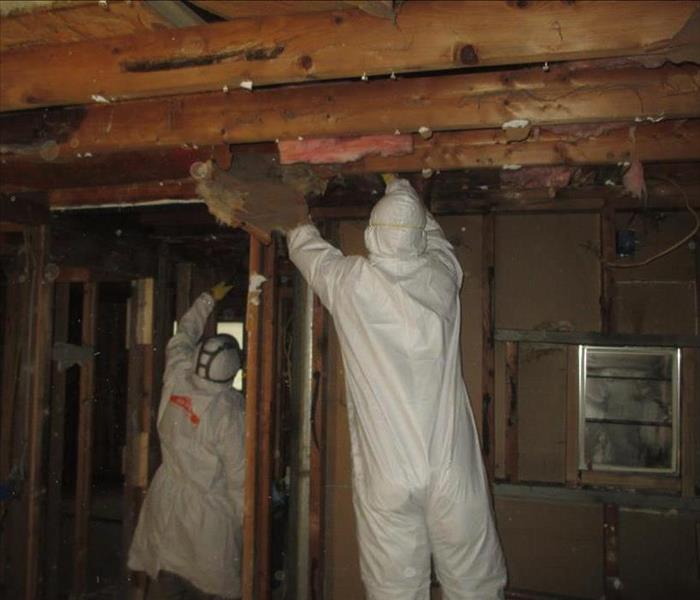 When fire & water damage strikes, a fast response is critical. We’re dedicated to responding immediately, day or night, to your Summit County property
When fire & water damage strikes, a fast response is critical. We’re dedicated to responding immediately, day or night, to your Summit County property
A fire restoration contractor can help you restore your home properly after a house fire.
When you hire a fire restoration company, it dispatches several fire restoration contractors, each of whom has the knowledge to use the tools necessary to complete the job. Their skills vary, from reducing the dangers in your home after a fire to preventing secondary water damage. Hiring a fire restoration contractor is an excellent idea because it allows the experts to work on many different things at once, which lets you focus on other things like insurance matters.
A Fire Restoration Contractor’s Equipment
A fire restoration contractor has a variety of tools and the knowledge necessary to use them effectively. One example of this is an ozonation machine. This machine generates ozone, a toxic gas, which fills the house and can partially reverse the effects of smoke odor from embedding itself in everything. These machines are expensive and dangerous, and only a qualified professional should use them.
Getting a referral from your insurance provider is an excellent idea. This ensures that the company you hire has contractors that actively implement sound business practices and can restore your home properly and in accordance with any applicable laws. In addition to this, this method allows you to be sure that the contracting company and your insurance provider can work well together and agree on an appropriate settlement.
Have Questions about Fire, Smoke, or Soot Damage?
Call Us Today – 330-677-4483
Fire Safety: Unplug Household Appliances
9/14/2017 (Permalink)
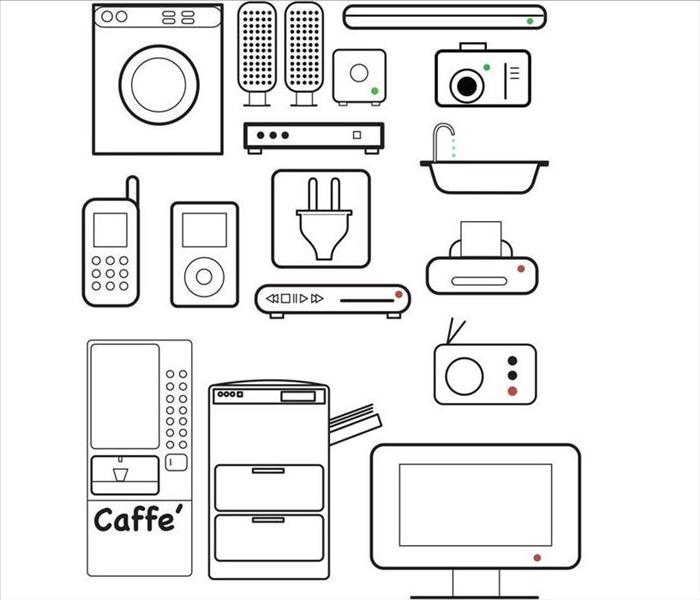 The consumption of household appliances worldwide is forecast to generate nearly 590 billion U.S. dollars in revenues by 2020.
The consumption of household appliances worldwide is forecast to generate nearly 590 billion U.S. dollars in revenues by 2020.
With electric appliances being so common in modern homes, it's easy to forget that there are very real risks and hazards associated with their use and even non-use.
Being safe when using electrical appliances, extension cords, light bulbs and other equipment is easy. It only takes one mistake to spark an electrical fire, but simple prevention measures can be effective solutions.
These safety tips can help keep all appliances operating safely and help you prevent unexpected fires in the home:
- Ensure any appliances you purchase are approved by Underwriters Laboratories (UL) or another reputable consumer laboratory.
- Unplug unused appliances and store cords safely out of reach of pets, young children or hazardous situations.
- Appliances that generate heat, such as clocks, televisions and computer monitors, should be given several inches of clearance all around for good air circulation and cooling.
- Do not attempt amateur repairs or upgrades.
- Keep all electric appliances away from water such as sinks, bathtubs, pools or overhead vents that may drip.
- Do not operate any electrical appliance with wet hands or while standing in water.
- Keep clothes, curtains toys and other potentially combustible materials away from radiators, space heaters, heating vents and other heat sources.
Source: Stephanie Sage of Sage Restoration
To read more on this subject, click here.
Have Questions about Fire Safety? Do you have fire damage? Call Us Today – (330) 677-4483
Why a Fire Restoration Contractor is the Way to Go
9/6/2017 (Permalink)
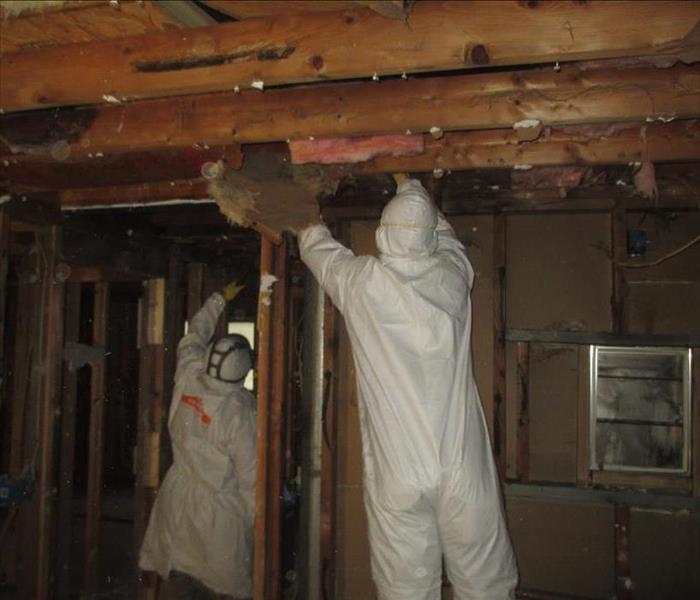 SERVPRO of Portage County has specialized equipment, specific training, and certifications that allow us restore your home to pre-fire condition.
SERVPRO of Portage County has specialized equipment, specific training, and certifications that allow us restore your home to pre-fire condition.
A fire restoration contractor can help you restore your home properly after a house fire.
When you hire a fire restoration company, it dispatches several fire restoration contractors, each of whom has the knowledge to use the tools necessary to complete the job. Their skills vary, from reducing the dangers in your home after a fire to preventing secondary water damage. Hiring a fire restoration contractor is an excellent idea because it allows the experts to work on many different things at once, which lets you focus on other things like insurance matters.
A Fire Restoration Contractor’s Equipment
A fire restoration contractor has a variety of tools and the knowledge necessary to use them effectively. One example of this is an ozonation machine. This machine generates ozone, a toxic gas, which fills the house and can partially reverse the effects of smoke odor from embedding itself in everything. These machines are expensive and dangerous, and only a qualified professional should use them.
Getting a referral from your insurance provider is an excellent idea. This ensures that the company you hire has contractors that actively implement sound business practices and can restore your home properly and in accordance with any applicable laws. In addition to this, this method allows you to be sure that the contracting company and your insurance provider can work well together and agree on an appropriate settlement.
Have Questions about Fire, Smoke, or Soot Damage?
Call Us Today – 330-677-4483
Fire Damage Cleanup
8/31/2017 (Permalink)
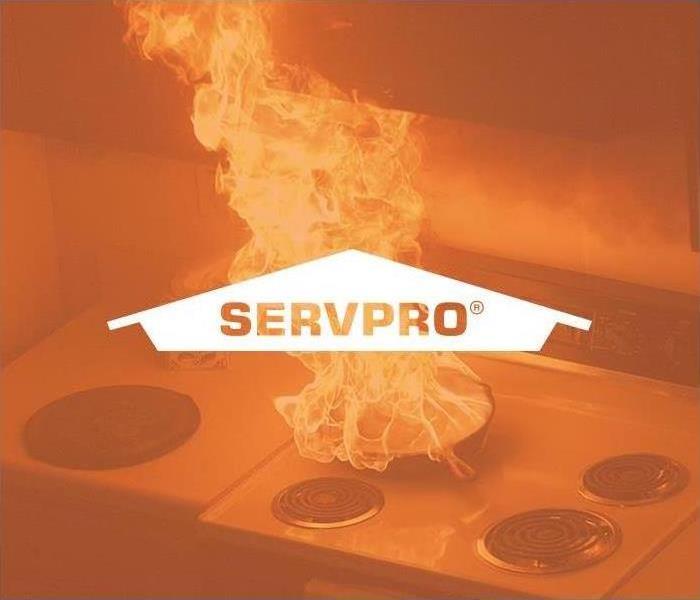 With our advanced training in restoration techniques, we have the experience and specialized equipment to quickly restore your property.
With our advanced training in restoration techniques, we have the experience and specialized equipment to quickly restore your property.
Fire damage clean up is an arduous process that often requires the proper industrial equipment and time. A standard vacuum cleaner is rarely enough. In addition, time is of the essence. In the wake of a fire, when victims are faced with insurance matters, arrangements for interim housing, and possible health concerns, homeowners are unlikely to make salvage efforts the top priority. Sadly, this could present a costly dilemma. In these cases, the services of a certified fire restoration company are invaluable.
The Institute of Inspection, Cleaning and Restoration Certification (IICRC) states that delays in fire damage clean up can have serious consequences. In addition to the obvious devastation created by heat, flames, and soot, water and smoke are powerful contaminators and destructors in their own right. Immediate intervention is critical to minimize exposure to these damaging agents in hopes of limiting restoration costs.
In addition to the structural destruction caused by the flames, acidic soot alone can cause irreparable harm to a home’s interior and belongings. But the problems don’t end there. Odor removal can present another challenge, and ceiling or box fans alone are not always powerful enough to disperse the smell of smoke. Water damage caused by first responders in an effort to extinguish the inferno further complicates matters.
For more information on fire cleanup and how to choose a restoration firm to do the damage cleanup, visit the IICRC website.
Do you need fire damage cleanup? Call our 24/7 Emergency Service line at (330) 677-4483, or request online help.
How to Keep Safe During a House Fire
8/17/2017 (Permalink)
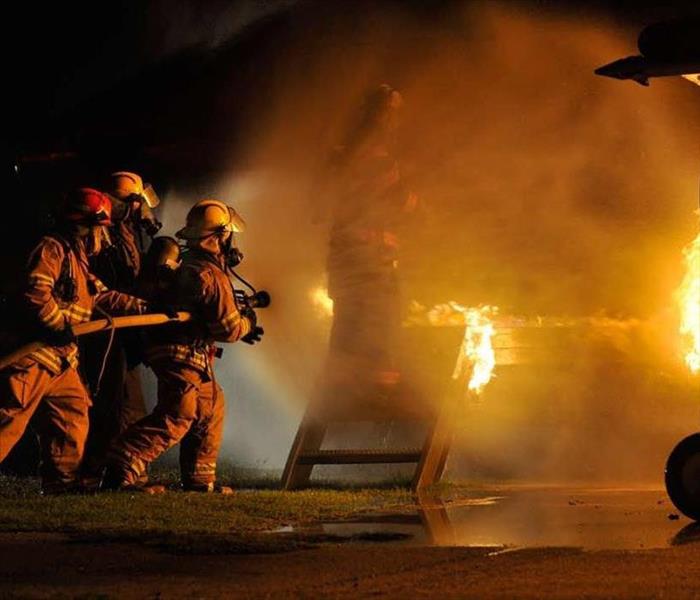 In less than 30 seconds a small flame can turn into a major fire. It only takes minutes for thick black smoke to fill a house or for it to be engulfed
In less than 30 seconds a small flame can turn into a major fire. It only takes minutes for thick black smoke to fill a house or for it to be engulfed
You may not think you'll ever fall victim to a house fire, but it's better to be prepared and know what to do to avoid panicking if it happens to you. To increase your chances of survival, follow these steps:
Keeping safe in your house during a fire:
- React as soon as you hear your smoke alarm go off. If you hear your smoke detector or see fire, exit your home as safely as possible. Do not stop to grab your belongings. Your only concern should be to get out as quickly as possible.
- Safely exit through doors. If you see smoke under the door, do not open the door to escape. If you do not see smoke, put the back of your hand to the door to feel for heat. If it is cool, open slowly and pass through. If you see fire, close the door to protect yourself from the fire and search for another exit.
- Prevent yourself from smoke inhalation. Get low to the floor and crouch or crawl on your hands and knees to evade the toxic smoke, avoiding disorientation and unconsciousness. If you must walk through the smoke, cover your nose and mouth with a shirt or towel.
- Stop drop and roll if your clothes catch fire. Immediately stop what you're doing, drop flat on to the ground and roll around until you smother the fire. Cover your face with your hands as you're rolling to protect yourself.
- Ward off the smoke if you can't get out. If you cannot escape, you can always reclaim some measure of control and stay safe, even if you feel trapped. Close the door and cover all vents and cracks with a cloth or tape to keep the smoke out.
- Call for help from a second story window. If you are trapped in a second story room, do what you can to get yourself to an area where people will be able to hear or see you. Take a sheet- preferably white- and hang it out the window to signify you need help. Be sure to close the window to the fresh oxygen doesn't draw the fire towards you. Put a blanket or towel at the base of the door to prevent the smoke from coming underneath.
- Escape from a second story window if you can. If you have an escape ladder, toss it down the side of the house. If you must go out the window, look for a ledge you can get yourself onto and hang down from your hands, facing the side of the building. Let yourself fall to safety.
What to do once you exit your home:
- Do a head count. Make sure everyone is accounted for. If anybody is missing, only re-enter the building if it is safe to do so. Tell the first responders immediately on their arrival if you are afraid someone is missing.
- Call 911. Use your cellphone or call from a neighbor's house.
- Do an injury assessment. After making the call and the resources are coming, check yourself and your family for any injuries. If there are, do what you can to address them until the fire department arrives.
- Get away from the structure. Keep a safe distance between you and the fire.
Preventing future house fires:
- Form and practice your family's escape plan. Have a plan of escape in the event of a fire. Practice at least twice a year to get comfortable with the routine. Plan to find two ways to escape from each room. Practice escaping by crawling, being in the dark and having your eyes closed.
- Make sure your home is prepared. Check your smoke detectors are working and always have fresh batteries. Make sure your windows can easily be opened and that screens can be quickly removed. Everyone in your family should be able to open and close all windows. Buy reliable collapsible ladders in case of higher level escapes.
- Practice safe behaviors. Teach your children that fire is a tool, not a toy. Always be in the kitchen when you're cooking. SO not smoke in the house and make sure you put out your cigarettes entirely. DIspose of any electronics with frayed wires. Avoid lighting candles unless they're directly in your line of vision. Always check that the gas is turned off as well as any other wired electronics. Finally, try to use a lighter instead of matchsticks.
For more information as well as a community Q&A, click here for the source of the above information.
Portage County Smoke and Soot Cleanup
12/1/2016 (Permalink)
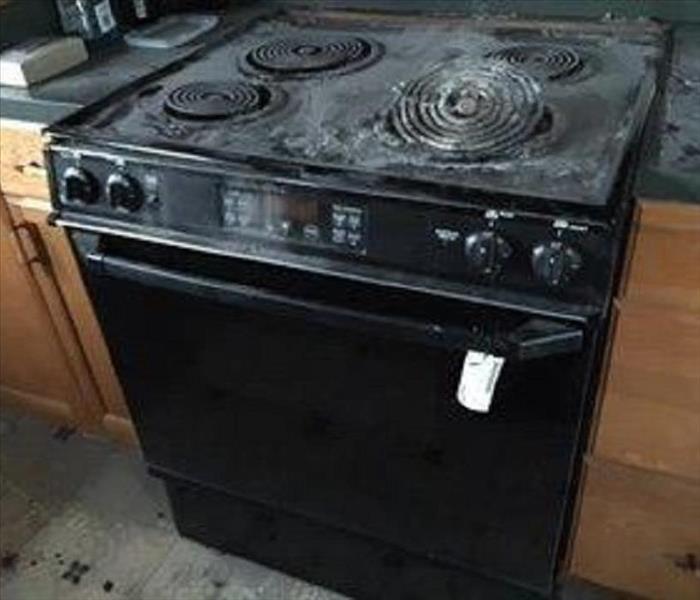 Smoke and Soot Damage Can Cause a Pervasive Odor in Your Portage County Home.
Smoke and Soot Damage Can Cause a Pervasive Odor in Your Portage County Home.
Smoke and soot is very invasive and can penetrate various cavities within your home, causing hidden damage and odor. Our smoke damage expertise and experience allows us to inspect and accurately assess the extent of the damage to develop a comprehensive plan of action.
Smoke and soot facts:
- Hot smoke migrates to cooler areas and upper levels of a structure.
- Smoke flows around plumbing systems, seeping through the holes used by pipes to go from floor to floor.
- The type of smoke may greatly affect the restoration process.
Different Types of Smoke
There are two different types of smoke–wet and dry. As a result, there are different types of soot residue after a fire. Before restoration begins, SERVPRO of Portage County will test the soot to determine which type of smoke damage occurred. The cleaning procedures will then be based on the information identified during pretesting. Here is some additional information:
Wet Smoke – Plastic and Rubber
- Low heat, smoldering, pungent odor, sticky, smeary. Smoke webs are more difficult to clean.
Dry Smoke – Paper and Wood
- Fast burning, high temperatures, heat rises therefore smoke rises.
Protein Fire Residue – Produced by evaporation of material rather than from a fire
- Virtually invisible, discolors paints and varnishes, extreme pungent odor.
Our Fire Damage Restoration Services
Since each smoke and fire damage situation is a little different, each one requires a unique solution tailored for the specific conditions. We have the equipment, expertise, and experience to restore your fire and smoke damage. We will also treat your family with empathy and respect and your property with care.
Have Questions about Fire, Smoke, or Soot Damage?
Call Us Today – 330-677-4483
Holiday Fire Safety Tips
12/4/2015 (Permalink)
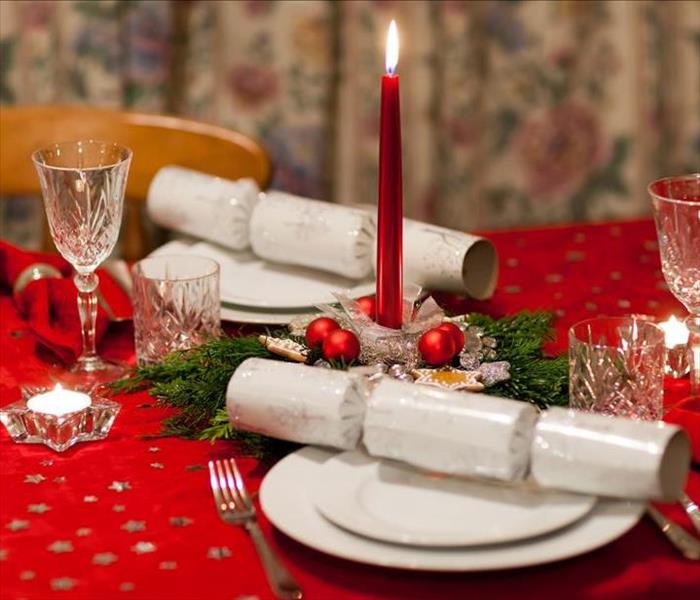 Stay safe this holiday!
Stay safe this holiday!
As the holiday season approaches, so does the peak time of year for cooking and candle fires. Cooking equipment is the number one cause of home and workplace fires. Thanksgiving, Christmas Day, and Christmas Eve are the three peak days for cooking fires. Candle fires peak on Christmas Day, Christmas Eve, and New Year’s Eve. SERVPRO reminds you and your family to stay safe this holiday season by following these fire safety tips:
Cooking Safety Tips
· Be especially careful when frying food. Frying is the greatest fire risk.
· Be aware that electric ranges cause more fires than gas ranges.
· Never leave cooking unattended. Unattended cooking causes 90% of kitchen fires.
· Clean thoroughly to prevent grease buildup.
Candle Safety Tips
· Please candles a safe distance from flammable objects. The leading cause of candle fires is placing candles too close to something that can burn, such as curtains or furniture.
· Do not leave candles unattended.
Smoke Detector Safety Tips
· Test smoke detectors once per month. Having working smoke alarms reduces one's chance of dying by fire by about half.
· Change batteries twice per year.
· Replace smoke detectors every 10 years.
· Be sure you have smoke detectors on each level of the home and placed near or inside each bedroom at a high point in the room.
Fire Extinguisher Safety Tips
· Follow the acronym P.A.S.S. – Pull the pin, Aim at the base, Squeeze the lever, & Sweep from side to side
· The best type of fire extinguisher for home use is a multipurpose "ABC" extinguisher, which uses a dry powder that is able to put out most types of fires.
· Fire extinguishers should be placed in plain sight close to ground level in areas of the home that are more prone to fires, such as the kitchen and garage.
· Keep a fire extinguisher in each occupied bedroom to help you and your family escape if a fire occurs during the night.
· Although fire extinguishers should last for 5-15 years, check the gauge regularly to make sure the needle is in the green area and inspect the pin, hose, and handle periodically.
Sources:
Akron Fire Department General Fire Safety presentation materials
http://www.nfpa.org/safety-information/for-consumers/causes/cooking
http://www.nfpa.org/research/reports-and-statistics/fire-causes/candles
Prevent Christmas Tree Fires This Holiday Season!
12/9/2014 (Permalink)
Christmas tree safety tips
From the National Fire Protection Association: http://www.nfpa.org/ Each year, fire departments respond to an average of 210 structure fires caused by Christmas trees. Carefully decorating Christmas trees can help make your holidays safer.
Picking the tree
- If you have an artificial tree, be sure it is labeled, certified, or identified by the manufacturer as fire retardant.
- Choose a tree with fresh, green needles that do not fall off when touched.
Placing the tree
- Before placing the tree in the stand, cut 1" - 2" from the base of the trunk.
- Make sure the tree is at least three feet away from any heat source, like fireplaces, radiators, candles, heat vents or lights.
- Make sure the tree is not blocking an exit.
- Add water to the tree stand. Be sure to add water daily.
Lighting the tree
- Use lights that have the label of an independent testing laboratory. Some lights are only for indoor or outdoor use, but not both.
- Replace any string of lights with worn or broken cords or loose bulb connections. Connect no more than three strands of mini string sets and a maximum of 50 bulbs for screw-in bulbs. Read manufacturer’s instructions for number of LED strands to connect.
- Never use lit candles to decorate the tree.
- Always turn off Christmas tree lights before leaving home or going to bed.
After Christmas
- Get rid of the tree when it begins dropping needles. Dried-out trees are a fire danger and should not be left in the home or garage, or placed outside against the home. Check with your local community to find a recycling program. Bring outdoor electrical lights inside after the holidays to prevent hazards and make them last longer.





 24/7 Emergency Service
24/7 Emergency Service
